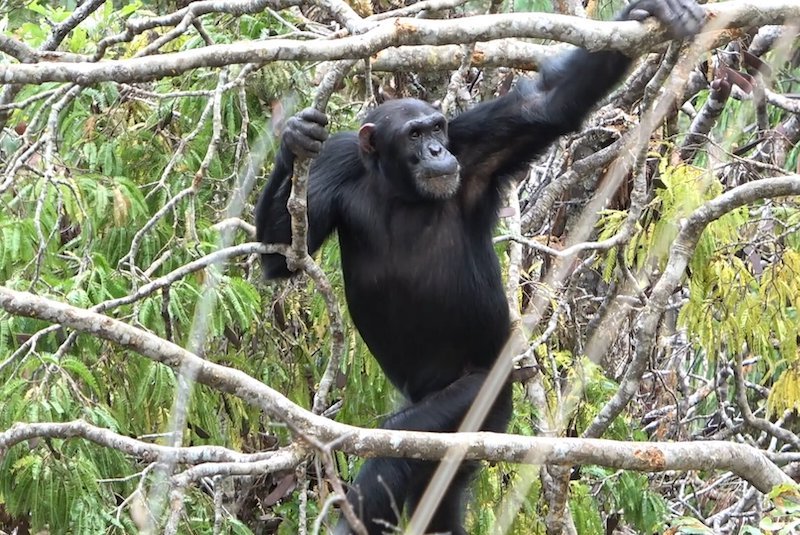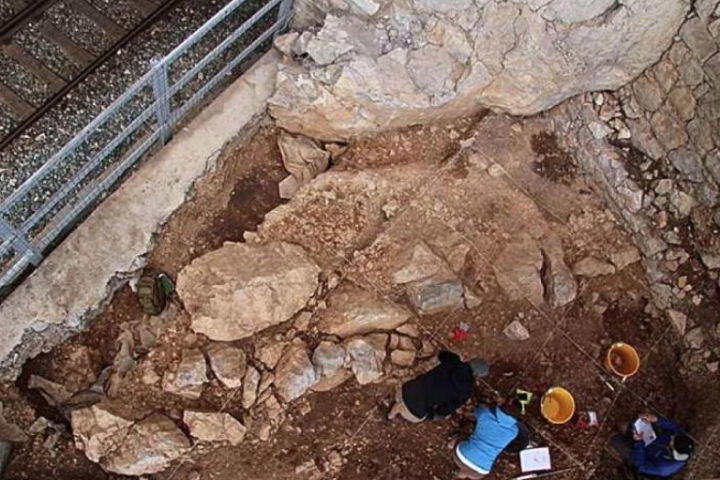According to new research, humans walking upright on two legs may have evolved in trees, not on the ground as previously thought
In a study published in the journal Science Advances, researchers investigated the behavior of wild chimpanzees, our closest relatives, living in the Issa Valley in the East African Rift Valley region of western Tanzania.
Known as a “savanna-mosaic” (a mixture of dry open land with a few trees and patches of dense forest) chimpanzees’ habitat is very similar to that of our earliest human ancestors. This region was chosen to enable scientists to explore whether the openness of this type of habitat encouraged bipedalism in hominins.
The study is the first of its kind to investigate whether savanna-mosaic habitats can explain the amount of time Issa chimpanzees spend on the ground. It also compares the chimps’ behavior with other studies of their forest-only cousins in other parts of Africa.
Overall, the study found that Issa chimpanzees, despite their more open habitat, spent more time in trees and were not as terrestrial as other chimpanzees living in dense forests, as expected.
What’s more, more than 85 percent of bipedalism events occurred in trees, even though the researchers expected Issa chimpanzees to walk more upright in open savanna vegetation where they couldn’t easily navigate the tree canopy.
The researchers say their findings contradict widely accepted theories suggesting that it was an open, dry savanna environment that encouraged our prehistoric human relatives to walk upright, and that they may instead have evolved to walk on two legs to move around trees.
“Naturally, since Issa has fewer trees than the typical tropical forests where most chimpanzees live, we assumed that we would see individuals on the ground rather than in trees. Moreover, since many of the traditional propulsions of bipedalism (such as carrying objects or walking over tall grass) are associated with being on the ground, we naturally thought we would see more bipedalism here as well. However, this is not what we found.”
“Our study shows that the retreat of forests and more open savanna habitats during the late Miocene-Pliocene about five million years ago was not actually a catalyst for the evolution of bipedalism. Instead, trees likely remained essential for the evolution of bipedalism – the search for food-producing trees may have been a driver of this trait.”
To establish their findings, the researchers recorded more than 13,700 instantaneous observations of spatial behavior from 13 adult chimpanzees (six females and seven males) over the course of the 15-month study, including approximately 2,850 observations of individual locomotor events (e.g. climbing, walking, hanging, etc.).
The researchers then used the relationship between tree/terrestrial-based behavior and vegetation to investigate patterns of association. Similarly, they noted each instance of bipedalism and whether it was associated with being on the ground or in trees.
The authors point out that walking on two legs is a defining characteristic of humans compared to other great apes that “walk with knuckles”. Yet the researchers say that despite their study, it is still a mystery why, among apes, only humans started walking on two legs.
“To date, numerous hypotheses for the evolution of bipedalism share the idea that hominins (human ancestors) descended from trees and walked upright on the ground, especially in more arid, open habitats without tree cover,” said study co-author Dr. Fiona Stewart. Our data don’t support this at all.”
“Unfortunately, the traditional idea that fewer trees equals more terrestrialism (living on the ground) is not confirmed by the Issa data. What we need to focus on now is how and why these chimpanzees spent so much time in trees, and that’s what we’ll focus on next as we try to put this complex evolutionary puzzle together.”
Drummond-Clarke, R. C., Kivell, T. L., Sarringhaus, L., Stewart, F. A., & Piel, A. (2022). Wild chimpanzee behavior suggests that a savanna-mosaic habitat did not support the 4 emergence of hominin terrestrial bipedalism. Science Advances.





